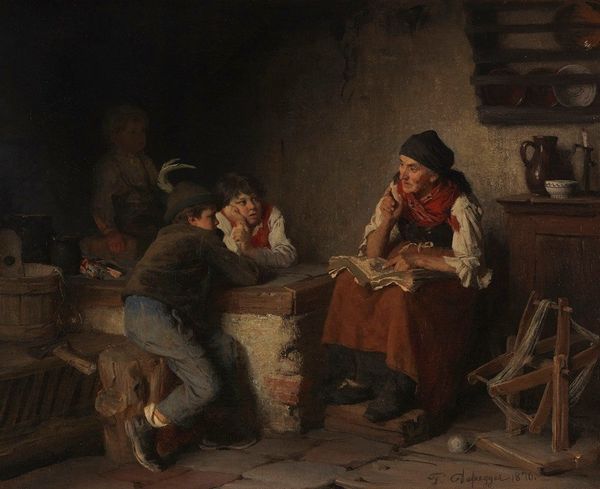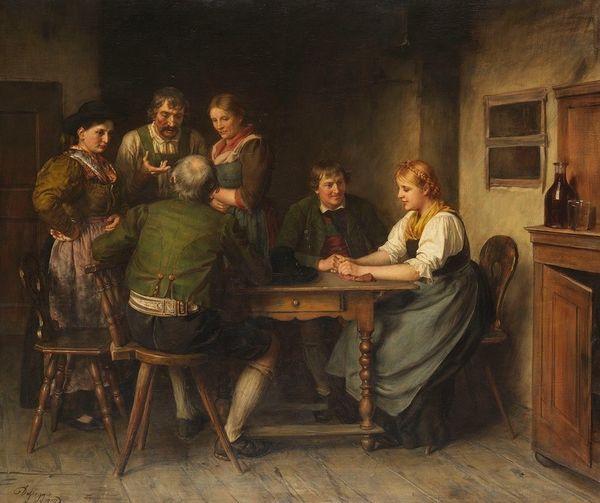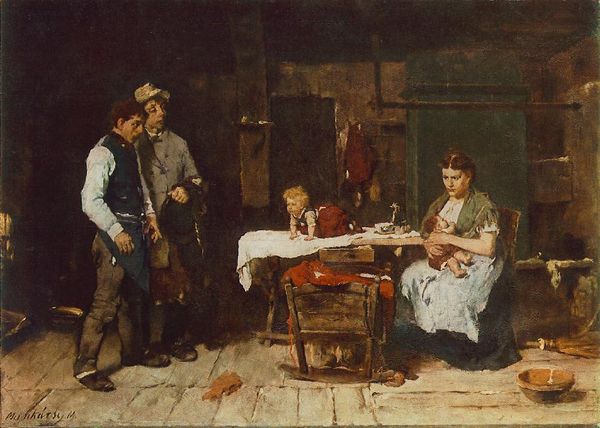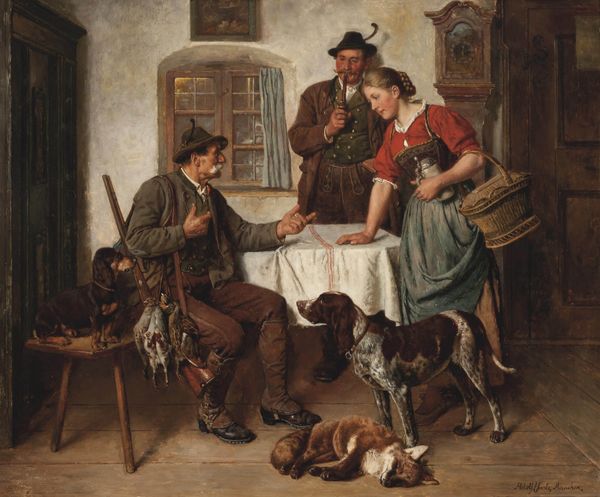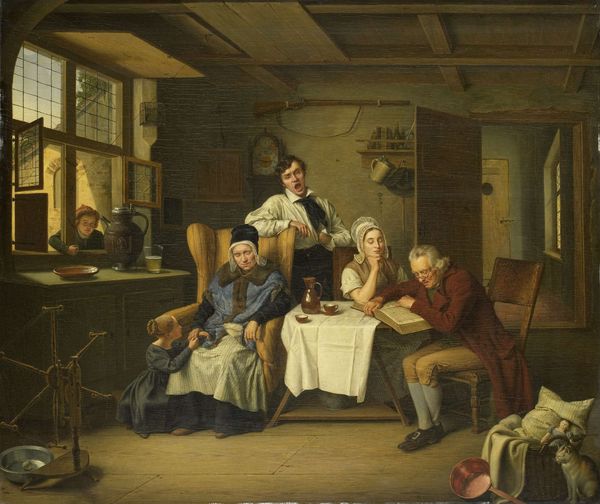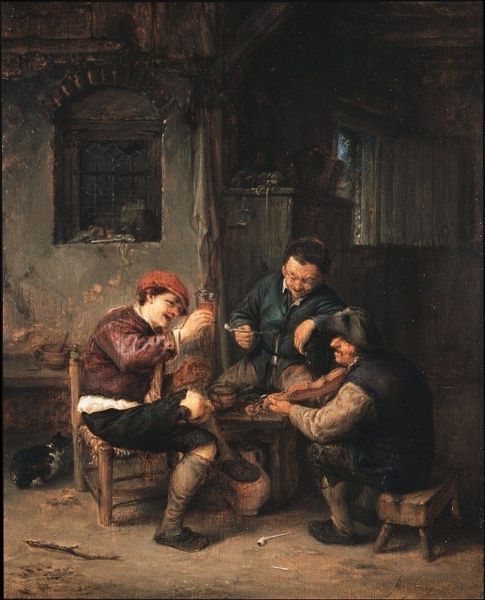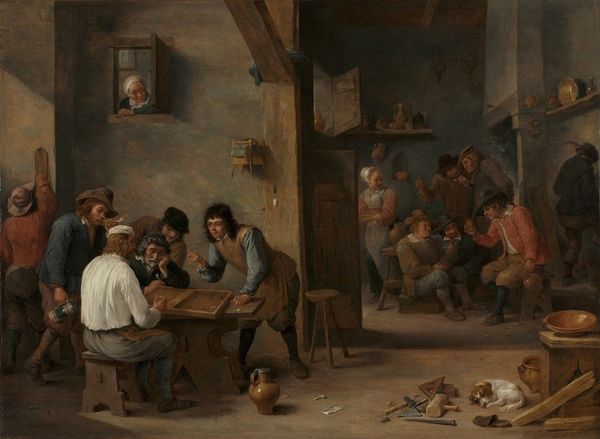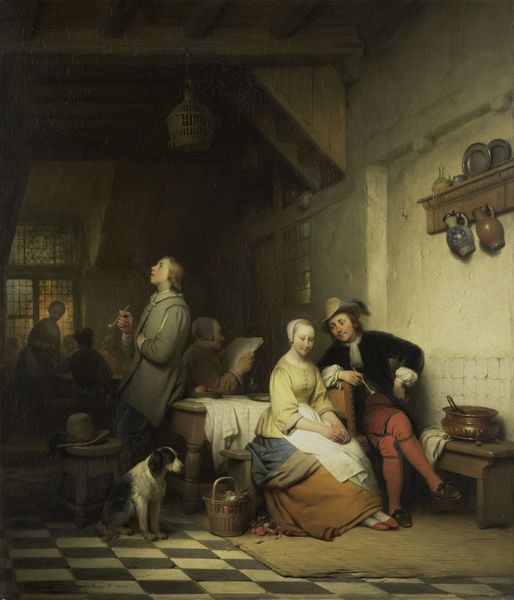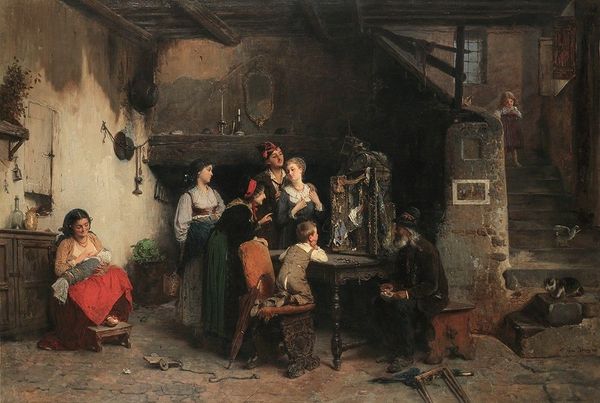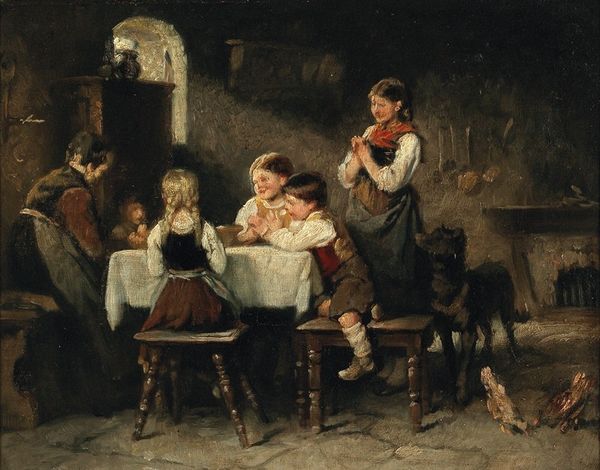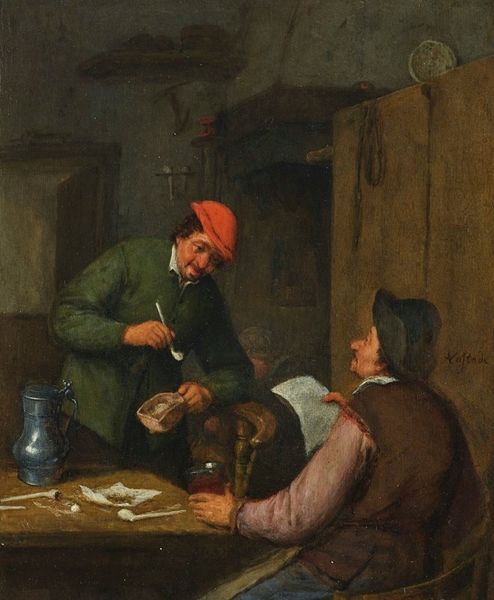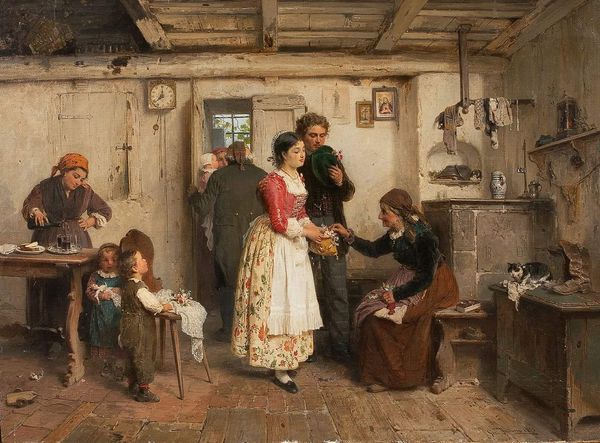
Copyright: Public Domain: Artvee
Editor: This is Franz von Defregger's "Decorating a Hat," painted in 1872. It depicts a woman standing in what looks like a rustic kitchen, about to embellish a hat, observed by some men at a table and a couple of hopeful-looking dogs. The scene feels warm and domestic. What symbolic layers do you see in this painting? Curator: The act of decorating the hat is itself a powerful symbol. Consider the hat as an emblem of identity, status, or perhaps even aspiration. The woman, by adding her personal touch, isn't just embellishing fabric; she's shaping her own narrative, literally adorning herself with symbols that communicate something about her. Editor: That's fascinating. So, the decorations she adds would be crucial to interpreting her character or intentions? Curator: Exactly. Moreover, the watching figures – the men at the table and even the dogs – they represent the audience, the society observing and judging this constructed identity. Their gazes create a tension; the woman is both performer and object of scrutiny. What do you make of their specific expressions? Editor: I see interest, maybe even a bit of expectation on the men's faces. The dogs seem focused solely on the food, as dogs will! Do you think Defregger is making a statement about the social constraints placed on women and their self-expression at the time? Curator: It's highly plausible. The confined interior setting and the judgmental audience subtly suggest a limited sphere of influence, yet the woman confidently asserts herself within it through the act of creation. The painting acts as a memory, bringing to light how identities and expectations interweave over time, and it's intriguing how something as simple as a decorated hat can reflect a world of meaning. Editor: That makes me appreciate the work on a deeper level, seeing how this simple scene connects to bigger social dynamics.
Comments
No comments
Be the first to comment and join the conversation on the ultimate creative platform.
